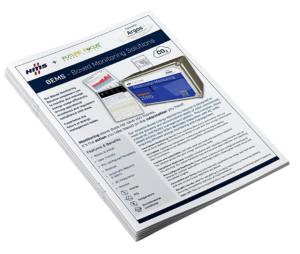If you would like the DATA SHEET as a PDF, you can access it through the link below:
Secondary Metering
WHAT IS SECONDARY METERING?
Quite simply, Secondary Metering systems allow organisations to internally monitor more effectively when and where their energy is being consumed as part of an active energy management program, as opposed to Fiscal meters, which are those meters supplied by the utility company, that you the consumer have no direct control over and usually only give you the overall energy consumption of your building in an historical profile, rather than providing current energy information.
Future Focus can engineer and manufacture secondary metering and monitoring systems to best fit our customersʼ individual requirements. Using only products from reputable manufacturers that are readily available.
The data is collected from the meters (electricity, gas water etc) by means of data loggers located within our panels. This data can be viewed either via a sites’ own LAN (local area network) or can be transmitted to our own web-based monitoring platform “Energy Effects” by GSM and can be viewed on any web enabled device.
All secondary metering panels for example that designed and built for tenant recharging will be supplied with MID certified and approved meters that conform to current legislation for recharging.
By installing secondary metering, organisations can pro-actively monitor the energy consumption for specific areas, departments or utility type, enabling pro-active energy reduction measures to be introduced and targets set.
Secondary metering can also assist in identifying increases in energy consumption for processes, or potential fault conditions within a building or site, thus offering a preventative maintenance solution…
Additionally, by installing the correct metering solutions, meters can be configured to monitor onsite projects to ensure projected savings for new technologies or systems installed are meeting their targets.
Future Focus also, only use “Open Protocol” Data loggers which mean that our customers are in control of where their data can go.
SAMPLE APPLICATIONS:

RETAIL

INDUSTRIAL/MANUFACTURING

TENNANT RECHARGE
How Secondary Metering Works
When you have an electricity supply connected, you will have a meter that measures the total electricity coming into the building. This is known as a billing or fiscal meter, because the information from it is used to produce your bill. Information from this meter can give you a picture of your total consumption but won’t tell you how that consumption is broken down.
Let’s say that you have a three-storey building, to get a breakdown of that total consumption, you can install secondary meters. These meters sit on your side of the supplier’s meter, so they don’t interfere with those. You can install meters to measure the areas of consumption that you feel are important. Here we’ve decided to install meters to record general power consumption and lighting consumption on each floor.
One of the benefits of having secondary meters installed is the ability to analyse your energy usage in more detail, For instance, you could take the example above and work out how much energy is spent just on lighting on each floor, or you could look at how much energy is being used across the whole of each of the three floors.
Let’s say that you rent out your building: Tenant 1 occupies the Ground Floor, and Tenant 2 occupies the first and second floors. By stating which meters are used by each tenant, you can then produce the figures for each so that they are billed according to their individual energy consumption.




